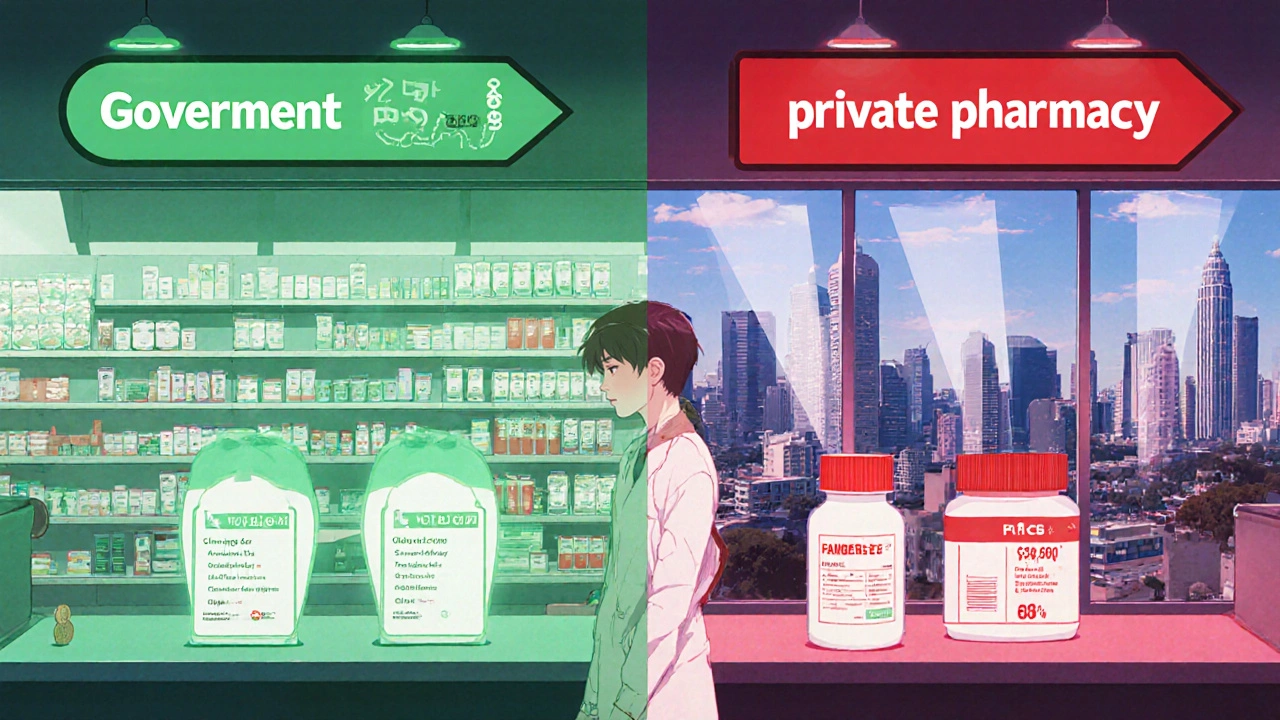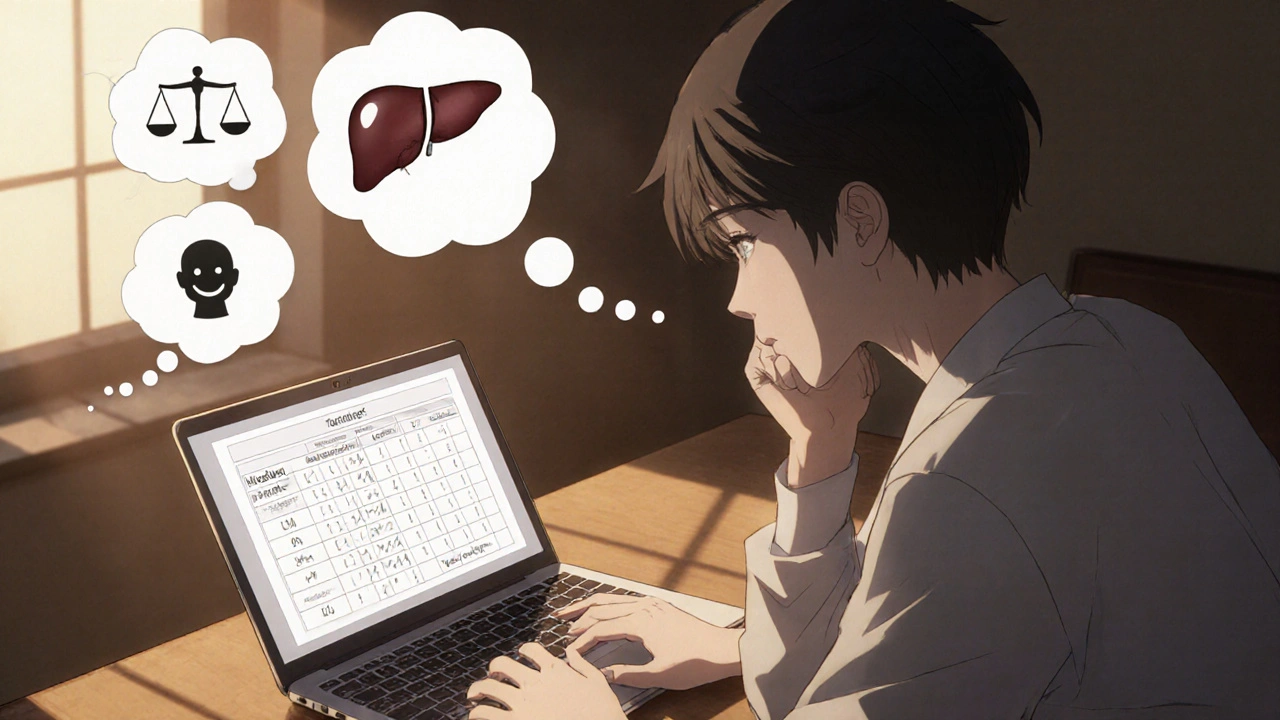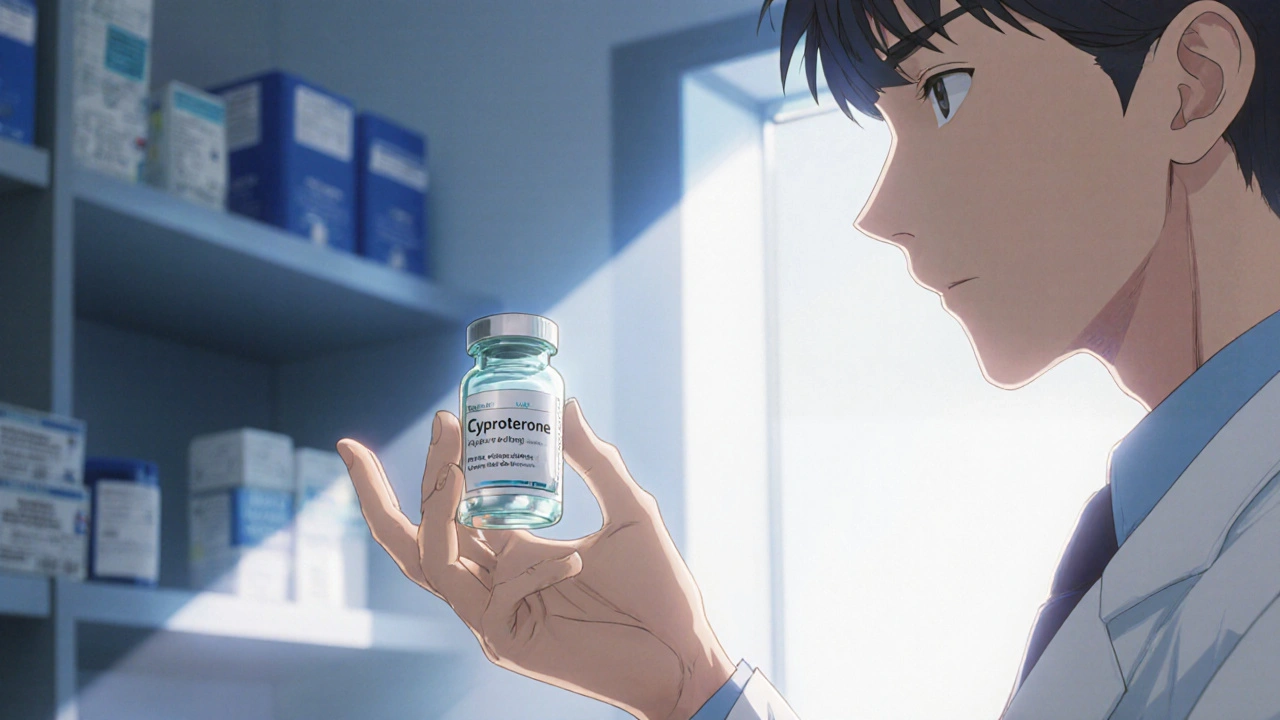If you’ve started researching hormonal meds and keep seeing the name Cyproterone acetate - a synthetic progestin that blocks the effects of testosterone - you probably wonder: how much will it set me back and is the expense justified?
What Exactly Is Cyproterone Acetate?
Cyproterone acetate is a potent anti‑androgen and progestogenic compound. It works by binding to androgen receptors, preventing testosterone from triggering its usual actions, and at the same time it suppresses luteinising hormone, lowering overall testosterone production. In plain language, it’s a double‑strike drug for conditions driven by excess male hormones.
Typical Clinical Uses
Doctors prescribe it for three main reasons:
- Advanced prostate cancer - as part of androgen deprivation therapy.
- Severe hirsutism or acne in women, especially when other treatments fall short.
- Female‑to‑male transgender hormone therapy, where a strong androgen blocker is needed.
Because the drug targets the same hormone pathway in all three cases, the cost‑benefit analysis often looks similar across indications.
How Pricing Works in Australia
The price you see on a pharmacy shelf is influenced by a few moving parts:
- Australian PBS (Pharmaceutical Benefits Scheme) - many brand‑name formulations are listed, meaning the government pays a large chunk and you only cover the co‑payment.
- Private pharmacies - if the medication isn’t PBS‑listed for your indication, you’ll pay the full retail price.
- Generic vs. brand - generic Cyproterone acetate packs are typically 30‑45 % cheaper than the patented version.
Understanding which of these applies to you can shave off a hundred dollars or more each month.
Breaking Down the Cost
Below is a snapshot of 2025 pricing across the most common supply routes. All figures are AUD and reflect the median price for a 30‑day supply of the standard 50 mg tablet regimen.
| Source | Formulation | Monthly Price (AUD) | Patient Co‑payment |
|---|---|---|---|
| PBS (listed for prostate cancer) | Brand - Androcur 50 mg | ~$260 | $27 (standard co‑payment) |
| Private Pharmacy - generic | Cyproterone acetate 50 mg | ~$150 | $150 (full cost) |
| Compounding pharmacy | Custom capsule 25 mg | ~$110 | $110 |
| Online Australian pharmacy | Brand - Androcur 50 mg | ~$230 | $230 |
Notice the stark difference between the PBS‑subsidised price and the out‑of‑pocket cost. If you qualify for a PBS listing, the Cyproterone acetate price drops dramatically, which is the biggest reason many patients ask "is it worth it?"

Insurance, Subsidies, and Out‑of‑Pocket Savings
Even when a drug isn’t PBS‑listed for your specific use, you can still claim a portion through private health insurers:
- Gap‑payment schemes: Some insurers reimburse up to 80 % of the Rx price if you present a valid prescription.
- Pharmacy discount cards: Programs like Discount Drug Cards or MedSaver offer 10‑20 % off the retail price at participating chains.
- Bulk purchasing: Ordering a 90‑day supply can lower the per‑tablet cost by 12‑15 %.
Check with your insurer’s pharmacy benefits manager - the fine print often hides a simple claim you can make.
How Does Cyproterone Acetate Stack Up Against Alternatives?
Because the biggest question is "do I need to spend this much?" it helps to see side‑by‑side numbers for the most popular androgen blockers.
| Drug | Typical Dose | Monthly Cost (AUD) | Main Indication | Key Side‑Effects |
|---|---|---|---|---|
| Cyproterone acetate | 50 mg daily | $150-$260 | Prostate cancer, hirsutism, transgender MTF → FTM | Liver enzyme elevation, fatigue, mood changes |
| Spironolactone | 100-200 mg daily | $30-$70 | Hirsutism, acne, transgender M → F | Hyperkalaemia, breast tenderness |
| Finasteride | 5 mg daily | $45-$90 | Benign prostatic hyperplasia, male pattern baldness | Sexual dysfunction, depression |
Cyproterone acetate is clearly the pricier player, but it also delivers a stronger androgen blockade, which can be crucial for aggressive prostate cancer or for trans men needing rapid masculinisation.
Is the Cost Worth It? Factors to Weigh
Here’s a quick checklist you can run through with your prescriber:
- Clinical efficacy: Does the literature show a significant advantage over cheaper blockers for your condition? For advanced prostate cancer, studies report a 15‑20 % increase in progression‑free survival compared with anti‑androgen monotherapy.
- Side‑effect profile: Higher potency means higher risk of liver issues. If you already have liver disease, the extra cost may not be justified.
- Duration of therapy: Short‑term use (e.g., 3‑6 months for severe acne) might warrant a cheaper alternative, whereas lifelong therapy for prostate cancer often leans toward a drug with proven long‑term outcomes, even if pricier.
- Financial assistance: Can you secure PBS listing or a discount card? If yes, the out‑of‑pocket gap shrinks dramatically.
- Quality of life impact: For many trans patients, the rapid reduction in facial hair and voice deepening is worth the premium because it aligns with their gender‑affirming goals.
If you tick most of the “yes” boxes, the price is likely justified. If several red flags appear, discuss alternatives with your doctor.

Practical Tips to Lower Your Bill
- Ask for the generic name: Pharmacists often have a cheaper version on hand.
- Check PBS eligibility: Even if you’re using the drug for hirsutism, a specialist can sometimes submit a PBS application under a “rare condition” clause.
- Use telehealth scripts: Online clinics sometimes partner with discount pharmacies to offer up‑to‑20 % lower prices.
- Combine prescriptions: If you need both cyproterone acetate and a testosterone blocker, some pharmacies give a bundle discount.
- Monitor blood work: Regular liver function tests catch problems early, avoiding costly hospital stays later.
Red Flags and Common Pitfalls
Beware of these situations that can turn a manageable expense into a financial nightmare:
- Ordering from unverified overseas sellers - cheap but risk counterfeit or sub‑therapeutic doses.
- Skipping the PBS application because you think it’s “too much paperwork.” The paperwork usually takes under a week and saves you hundreds.
- Self‑adjusting the dose without medical guidance - you might end up needing extra lab tests, which adds cost.
Bottom Line: Making an Informed Decision
When you look at the Cyproterone acetate price in isolation, it can feel steep. But the real question is whether the therapeutic gain outweighs the monetary outlay. By checking PBS eligibility, comparing alternatives, and factoring in your specific health goals, you can turn a vague "is it worth it?" into a concrete answer.
Is Cyproterone acetate covered by the PBS?
Yes, for prostate cancer and certain severe androgen‑dependent conditions. For other uses you’ll need a private prescription, but many doctors can still apply for a special PBS listing.
How much does a 30‑day supply typically cost?
Retail prices range from $150 for a generic tablet to $260 for the brand‑name version. With PBS co‑payment it drops to around $27.
Are there cheaper anti‑androgens that work as well?
Spironolactone and finasteride are cheaper, but they provide weaker androgen blockade. For aggressive prostate cancer, cyproterone acetate remains the most effective option.
Can I get a discount without a pharmacy card?
Yes - bulk orders, telehealth‑linked pharmacies, and occasional manufacturer rebates can shave 10‑20 % off the price.
What side‑effects should I monitor?
Liver enzyme elevation, fatigue, mood swings, and in rare cases thromboembolic events. Regular blood tests every 3‑6 months are recommended.
